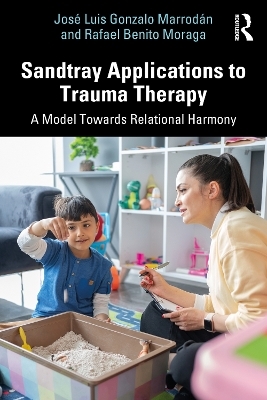
Sandtray Applications to Trauma Therapy
Routledge (Verlag)
978-1-032-41657-1 (ISBN)
The book begins with a review of the most frequently asked questions that professionals ask themselves when using the sandtray. It then details the Barudy and Dantagnan model of trauma therapy to understand and integrate sandtray therapy with patients who have suffered trauma. Chapters describe the importance of neuroaffective communication, directive and non-directive working methodologies, and how to use the technique in regulation, empowerment, and resilient integration of trauma. A featured chapter by the second author, Dr. Raffael Benito, presents the neurobiology behind sandtray therapy, outlining step by step what happens in the brain of a patient during a sandtray session. Transcripts of clinical cases, sandtray images, and true client stories are integrated throughout.
This practical volume will appeal to sandtray practitioners, trauma therapists, psychologists, and psychiatrists working with patient experiences of abandonment, mistreatment, or sexual abuse, among others.
José Luis Gonzalo Marrodán, PhD, is a psychologist specialist in clinical psychology, psychotherapist by the EFPA, postgraduate in systemic-infant traumatherapy by the IFIV of Barcelona, and clinical EMDR specialist for adults. He runs the blog: www.buenostratos.com. Rafael Benito Moraga, PhD, is a psychiatrist, family therapist, and postgraduate in systemic-child traumatherapy by the IFIV of Barcelona. He works in his private clinic conducting psychiatric and psychotherapeutic treatment of adolescents and adults.
1. The most frequently asked questions about the sandtray technique 2. Comprehensive psychotherapy model where the sandtray technique is applied: Barudy and Dantagnan´s Three Block Systemic Traumatherapy 3. Sandtray and trauma therapy 4. The sandtray technique: The work of identification, expression and emotional regulation 5. The sandtray technique to work on empowerment (Block II) 6. The sandtray technique to work on the resilient reintegration of traumatic contents and the psychological elaboration of the life story (Block III) 7. How the brain damaged by trauma works when performing sandplay therapy
| Erscheinungsdatum | 30.08.2023 |
|---|---|
| Zusatzinfo | 6 Tables, black and white; 23 Halftones, black and white; 23 Illustrations, black and white |
| Verlagsort | London |
| Sprache | englisch |
| Maße | 156 x 234 mm |
| Gewicht | 300 g |
| Themenwelt | Geisteswissenschaften ► Psychologie ► Psychoanalyse / Tiefenpsychologie |
| Medizin / Pharmazie ► Medizinische Fachgebiete ► Psychiatrie / Psychotherapie | |
| Sozialwissenschaften ► Soziologie | |
| ISBN-10 | 1-032-41657-2 / 1032416572 |
| ISBN-13 | 978-1-032-41657-1 / 9781032416571 |
| Zustand | Neuware |
| Haben Sie eine Frage zum Produkt? |
aus dem Bereich


